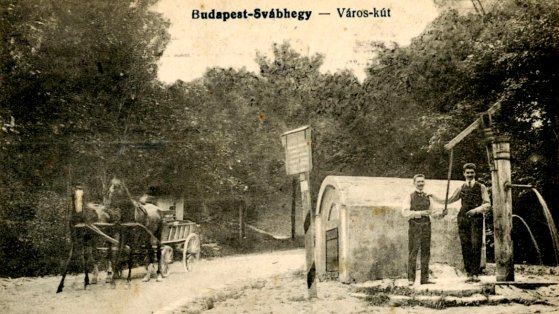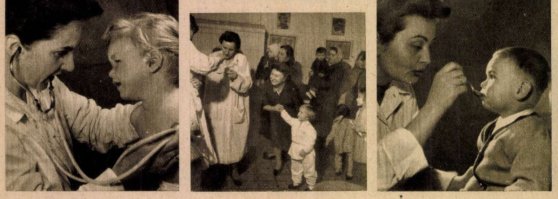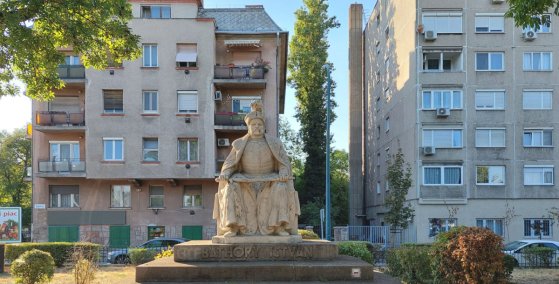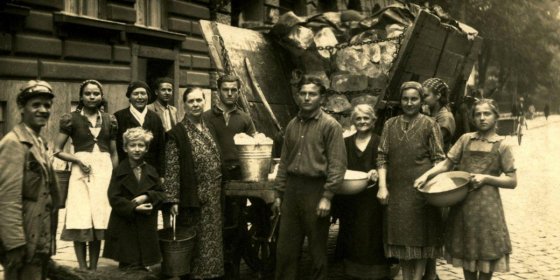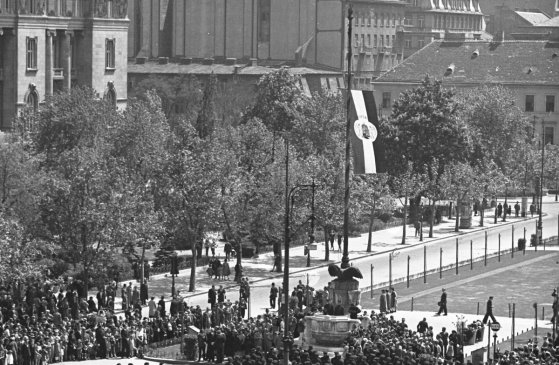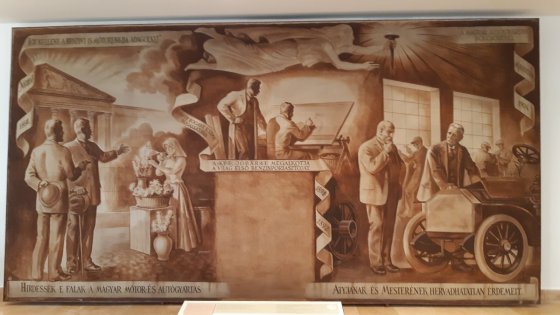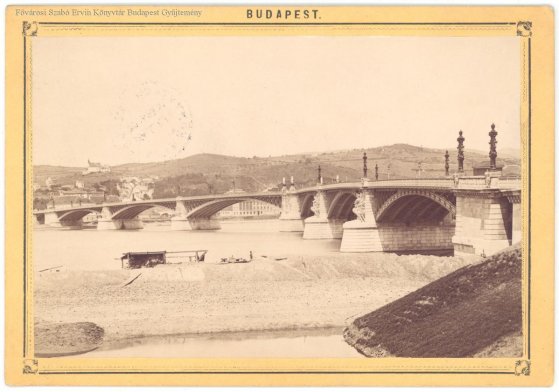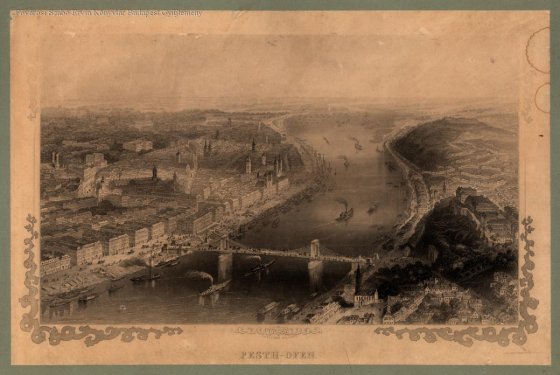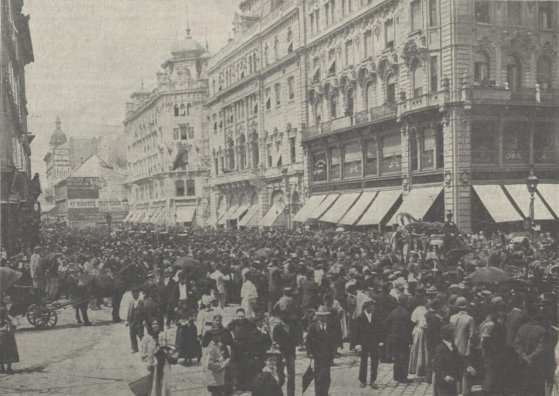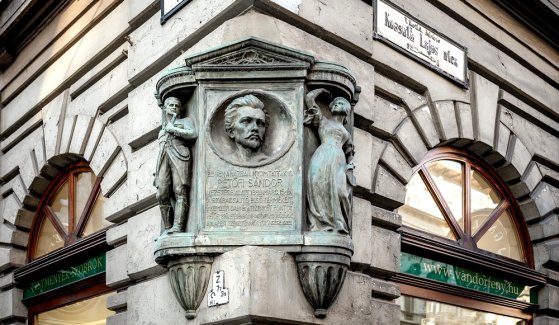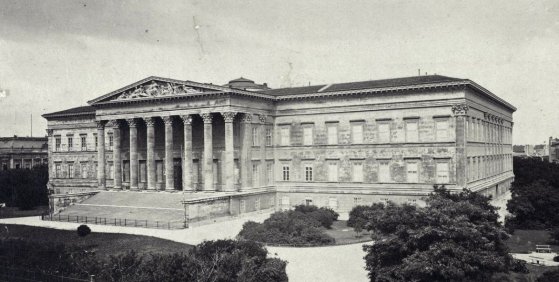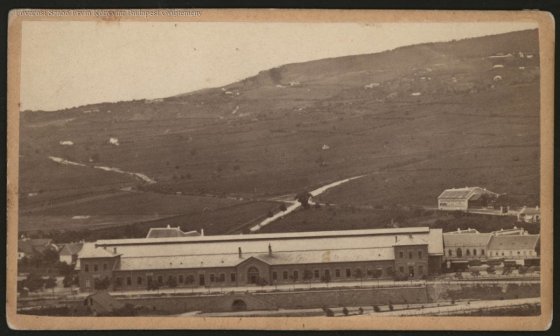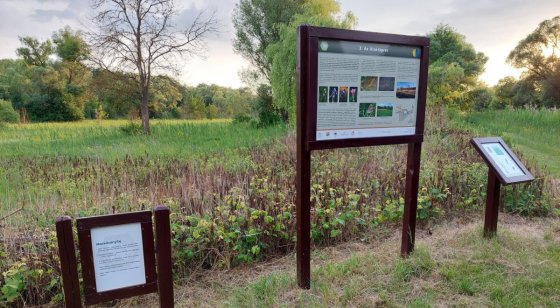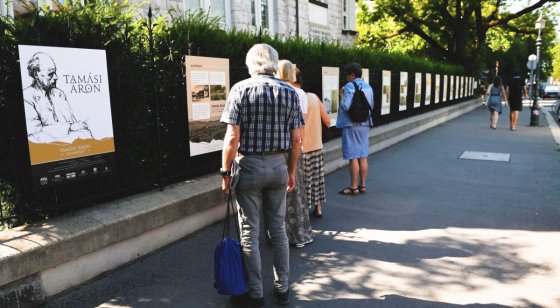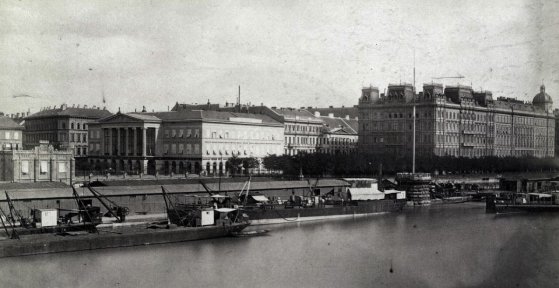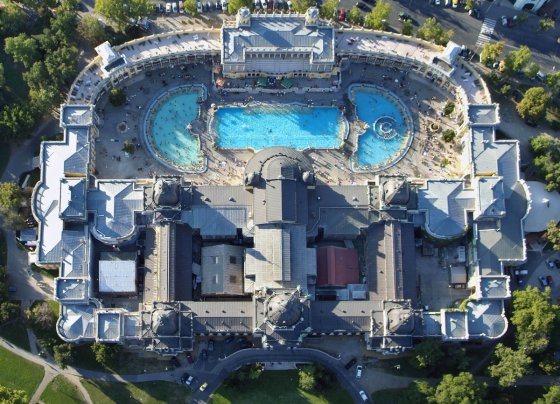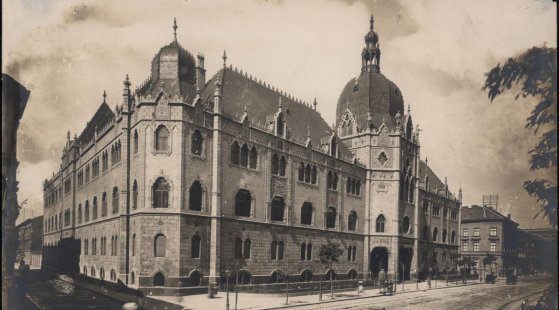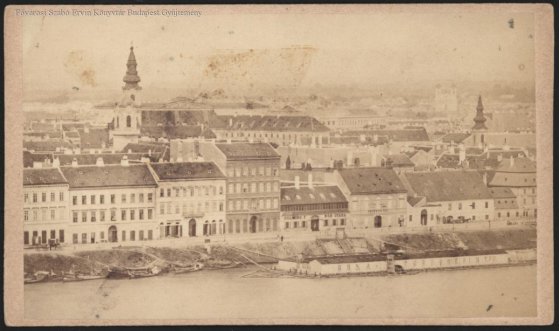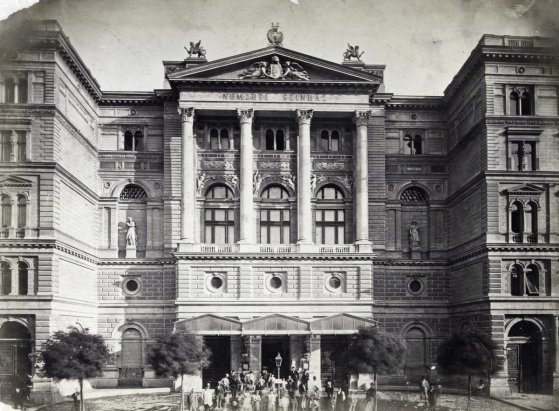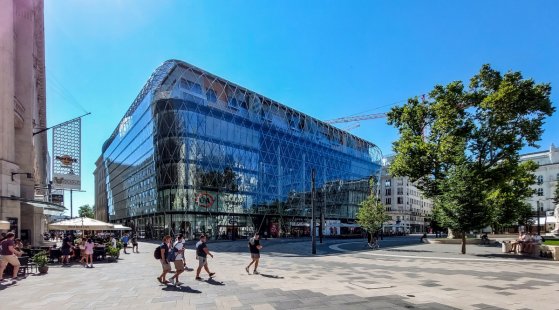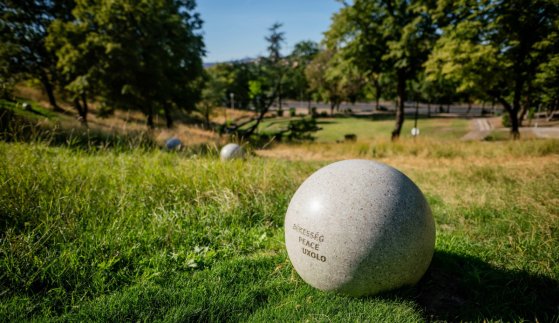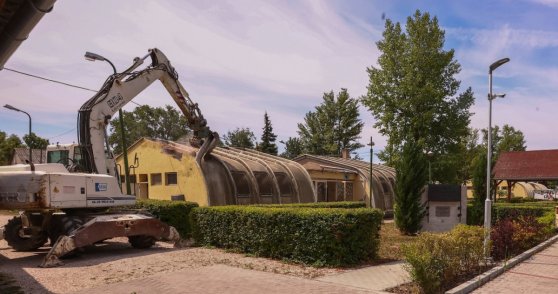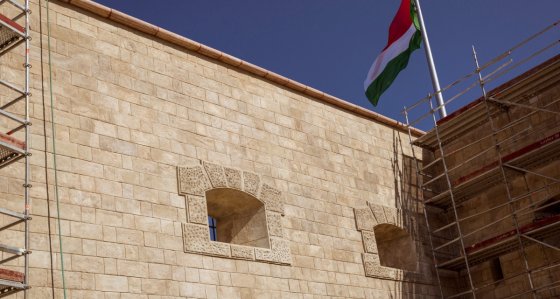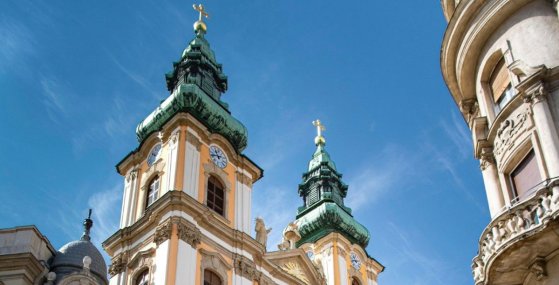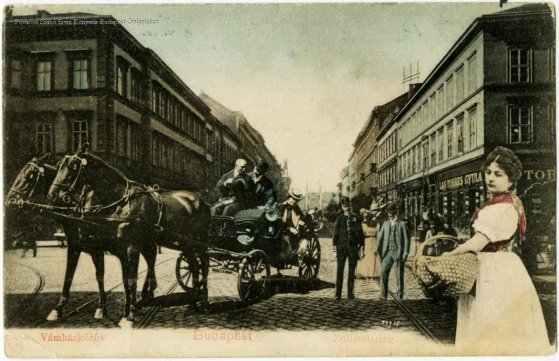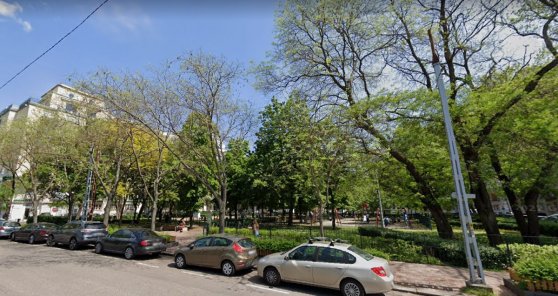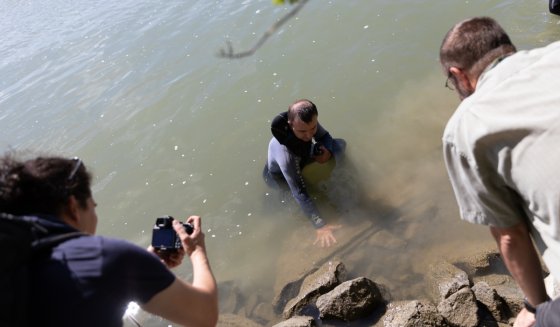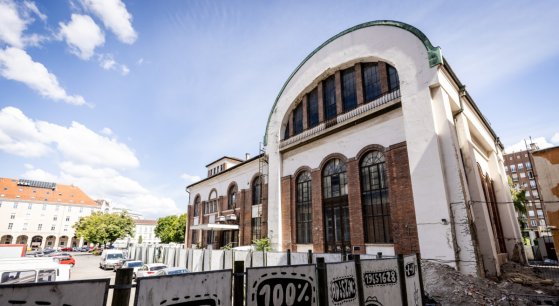 The „intertwined history” of the bridges and the city of Budapest
Which ideas and events have shaped the fate of bridges of Budapest and the cityscape? Alongside many other interesting facts, this question is also answered this newly published book by the Budapest City Archives, which introduces the history of bridges in Budapest.
The „intertwined history” of the bridges and the city of Budapest
Which ideas and events have shaped the fate of bridges of Budapest and the cityscape? Alongside many other interesting facts, this question is also answered this newly published book by the Budapest City Archives, which introduces the history of bridges in Budapest.
PestBuda
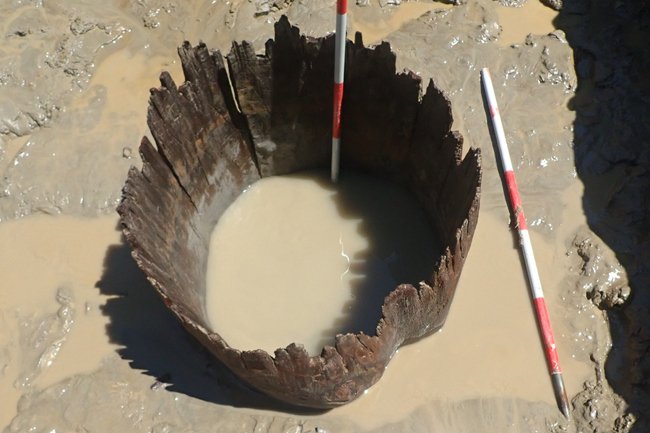 Archaeologists found a 7,000-year-old wood-lined well at Budafoki road
Archaeologists found a 7,000-year-old wood-lined well at Budafoki road
August 12, 2022 at 5:00 PM
During the excavation at Budafoki road in the 11th district, the archaeologists uncovered a seven-thousand-year-old well, which was created from the hollowed-out trunk of a large tree. Previously, details of a Neolithic and an Árpád-era settlement came to light in the area.
A forgotten occupation: water sellers on the streets of Pest and Buda
August 11, 2022 at 6:47 PM
Water is a basic necessity for life, so its significance has been extremely important in all ages. Today it is natural that water flows from the tap, but in the past this was not the case, water was also brought to the houses by vendors so that people could wash, cook, clean themselves, and most importantly, drink. In the 19th century, Pest and Buda began to develop significantly, the local wells and sources could no longer fully satisfy the needs, so water sellers appeared who measured their portage for money.
Many people in Budapest were afraid of the polio vaccine, but in the end they managed to defeat the disease
August 8, 2022 at 3:47 PM
The polio epidemic took its toll in several waves in many parts of the country in the 1950s. The first vaccination campaign in Budapest and the country took place 65 years ago, at the end of July and beginning of August, 1957. But in the capital, far fewer people vaccinated their children than elsewhere, because many were afraid of vaccination. People finally managed to defeat this terrible viral disease.
Polish-Hungarian two good friends - the calvary of István Báthory's sculpture in Budapest
August 7, 2022 at 3:33 PM
The friendship between the Polish and Hungarian people goes back centuries, and it was founded by the kings ruling in the Middle Ages. One of the most important of them was István Báthory, who also acquired the Polish throne as a Transylvanian prince. His memory was cherished between the two world wars, and in 1933 - on the four hundredth anniversary of the monarch's birth - there were plans to erect a statue to him in Budapest, which was finally put in place only a quarter of a century later.
When icemen still walked the streets of Pest and Buda
August 5, 2022 at 2:26 PM
The heat is raging on the streets of Budapest, and we are greeted by increasingly hot days. During this unusually warm period, we always think of the possibilities of refreshment, and of cooling with the beneficial effect of ice. In the last century, one of the characteristic figures of the streets of Budapest was the iceman, who transported huge blocks of ice to cool food, fill ice stacks, and cut them to the required size. Long after the appearance of the first refrigerators, even in the 1950s and 1960s, ice trucks were on the streets of Pest and Buda, as evidenced by contemporary photographs.
A forgotten monument on Szabadság Square - The messages of the Relic National Flag
August 3, 2022 at 1:35 PM
Szabadság Square is still home to many statues and monuments today, and it was no different in the first half of the 20th century. After the Trianon peace decree, the allegorical statues commemorating the separated parts of the country were erected here, and then the National Flag. The latter's idea was formulated in August 1927 - ninety-five years ago - and was followed by action half a year later.
The famous Hungarian inventor passed away 100 years ago - Donát Bánki stayed here to enrich his country
August 2, 2022 at 1:20 PM
He made the world's first atomizer engine together with János Csonka, his other invention, the Bánki Turbine, bears his name, and he also designed the mechanical equipment of the former Elevátor House on Boráros Square, the grain transfer building demolished after the war. Donát Bánki was a legendary engineer of the Ganz Factory and a renowned teacher at the University of Technology. He died in Budapest on 1 August 1922.
The construction of the Margaret Bridge began before the city unification - piling began 150 years ago
August 1, 2022 at 9:00 AM
The Margaret Bridge was the second bridge between Pest and Buda, the construction of which began 150 years ago, on 1 August 1872, even before the unification of the city. Many people criticized the designated location, but the government decided that the new Danube crossing should connect to the planned Outer Ring Road and through it to the Sugárút [Avenue]. The bridge was designed by a French engineer and built by the French company he founded, and was completed in four years.
When the Turkish Sultan visited Pest and Buda
July 31, 2022 at 10:30 AM
The Turkish Sultan arrived in Pest-Buda in the summer of 1867. On the occasion of the one-day visit, the people of Pest organised a folk ceremony, welcoming the guest with 72 cannon shots. Pasha Abdul-Aziz stayed here for only a few hours, visited the the royal palace in the Castle, and his program even included a carriage ride in Pest, and then left in the same way as he arrived, by boat.
The first lord mayor of Budapest died 125 years ago
July 30, 2022 at 11:00 AM
Károly Ráth was the lord mayor of Budapest from the time of the unification of the city, in 1873, and he was re-elected a total of four times. He held this post in the quarter century when the Hungarian capital developed into a metropolis. He witnessed the construction of Andrássy Avenue and Outer Ring Road, and saw how Budapest's famous buildings, public institutions, schools, and hospitals were constructed. He even took part in the millennium celebrations and died as mayor 125 years ago, on 30 July 1897.
The Landerer printing house has become a historical monument
July 29, 2022 at 3:00 PM
Five new locations have been added to the list of historical monuments. Among them is the former Landerer printing house in the 5th District, where the 12 points formulating the demands of the 1848 revolution and the National Anthem were printed.
Interior transformation of the National Museum - The building was also expanded with a hidden floor
July 29, 2022 at 9:00 AM
The Hungarian National Museum is one of the iconic buildings of our country, so since it was handed over in 1847, attention has been paid to its condition. By the beginning of the 20th century, however, its collection had already grown to such an extent that excessive crowding made its operation impossible. Some of the preserved material was transported to other buildings, and then in 1926, its large-scale restoration began, during which a hidden, third floor was also created in 1927 - ninety-five years ago.
By train to Pest and Buda - Until the Compromise, only private railways operated in the country
July 28, 2022 at 9:00 AM
Today, it is natural to get on the train or plane and get anywhere in the world from Budapest. However, it was quite different a century and a half ago. Let's see where someone could travel from Pest or Buda by train 155 years ago, in the year of the Compromise!
Nature conservation trails have been renovated
July 27, 2022 at 6:30 PM
There are a total of 40 kilometers of nature trails in the capital, and you can find them in almost every major nature conservation area. The staff of Főkert, together with other organizations, renovated the entire route network on the Pest side for the summer of 2022.
Where the Nyugat editors' favourite coffee house operated - The Krausz Palace was built on Sugárút
July 27, 2022 at 10:30 AM
The former Krausz Palace is located on 12 Andrássy Avenue, the capital's most representative road. Its designer, Zsigmond Quittner - the creator of the Gresham Palace - was only 27 years old when he designed this spectacular apartment building for the order of the wealthy manufacturer Lajos Krausz. Famous artists such as Károly Lotz, Gyula Donáth, and József Róna participated in the decoration of the house, built in 1885, whose works can be seen on the Opera House, Vigadó, and the National Bank building, among others. The Magyar Korona Coffee House later operated on the ground floor, which was also a favourite place for the editors and authors of the Nyugat.
Tamási Áron 125 – Exhibition opened on Andrássy road
July 25, 2022 at 7:00 PM
As part of the Áron Tamási commemoration year, the Hungarian Academy of Arts organized a fencing exhibition in honor of the great creator of Hungarian literature. The exhibition of 17 paintings related to the oeuvre of the writer, who was born 125 years ago, can be seen at 101 Andrássy road until October.
Plans for a metropolis - the beginnings of Budapest's urban planning
July 25, 2022 at 10:00 AM
Budapest's golden age coincided with the country's economic boom: after the Compromise of 1867, the city, located on both banks of the Danube, began to develop rapidly. In 1870, in order to regulate growth, the Parliament established the Budapest Public Works Council, whose first tasks included the procurement of a general city plan. Based on this, in 1872 - one hundred and fifty years ago - Pest's first comprehensive regulatory plan was drawn up.
Baths from above - As seen by the birds
July 24, 2022 at 1:00 PM
In the raging summer, many people cool off in Budapest's well-known spas, which are not only attractive because of their healing effects and mineral-rich waters, but most of them are also tourist attractions and represent an inestimable value within our architectural heritage. Many people know these masterpieces inside and out, but perhaps few have seen them from above. From this special point of view, the surroundings of the baths can be seen in aerial photos.
The glass hall of the Museum of Applied Arts is open again - you can see the never-before-seen art treasures of the Esterházy family
July 23, 2022 at 12:30 PM
The Museum of Applied Arts, which has been closed for renovations since 2017, has temporarily opened its doors. The glass hall and ground floor gallery of the building designed by Ödön Lechner and handed over in 1896 at the end of the millennium celebrations can be visited, where you can see a special selection of the war-damaged and never exhibited art treasures of the ducal treasury of Esterházy.
The last year of Pest's independence - Only 34 four-story houses stood in the city before unification
July 22, 2022 at 11:00 AM
Three small towns stood on the banks of the Danube 150 years ago. The largest of the settlements was Pest on the left bank, which already had almost 5,700 buildings. Budapest existed only in plans and legislation, but Pest was constantly being built and developed. In 1872, the last independent year before the unification of the city, 206 new residential buildings were handed over, but the fact that 28 stables were also built in the same year clearly shows the way of life and transport options of the time.
A 190-year-old proposal to create a permanent Hungarian theatre
July 21, 2022 at 1:30 PM
The first permanent Hungarian-language theatre opened in Pest in August 1837, making a nearly 40-year-old dream come true. The construction of the theatre was given a big boost by a work five years earlier, which put a detailed and thorough proposal on the table on how to establish a Hungarian theatre and ensure its operation in the long term. Its creator was István Széchenyi, who already called the Hungarian capital Buda-pest in 1832.
As of 1 August, four downtown public spaces will become state property
July 19, 2022 at 8:00 PM
From 1 August, Vörösmarty square , Széchenyi István square , Podmaniczky Frigyes square , and József Attila street will be owned by the state and managed by the 5th district local council. The law on this matter was adopted by the Parliament today.
The Nelson Mandela Park on Gellért Hill was handed over
July 19, 2022 at 12:00 PM
Although many people protested against it earlier, the Nelson Mandela Park was handed over on the northern slope of Gellért Hill, in the area between the Philosophers' Garden and Hegyalja street. The Capital City local council timed the handover to the 104th birthday of the first colored president of the Republic of South Africa.
The former youth camp in Csepel is being renovated
July 18, 2022 at 7:00 PM
A new family-friendly leisure park will be created on the banks of the Little Danube by the end of 2023 in the 21st district Holland street youth camp. A playground and pedestrian walkways will be built on the Csepel site, the existing boathouse will be renovated, and tennis courts will also be created. Demolition of the pavilion and dressing rooms, which were in poor condition, has begun.
A section of the wall of the Citadel, which is under renovation, has already been completed
July 18, 2022 at 5:30 PM
The nearly 10,000 square meter wall surface of the Citadel is being renovated, the first restored wall section can already be seen on the northern side of the rondella. The white limestones from Süttő and the carved red limestones from Tardos were covered with a special layer to make them durable. The completed wall section will soon be followed by the reconstruction of the entire Danube facade of the Citadel and then the Buda facade of the fortress.
Art inside the centuries-old walls - the little-known side of the University Church
July 17, 2022 at 9:00 AM
The walls of the University Church have been standing tall in the inner city of Pest for 280 years: the construction of one of the jewels of Hungarian Baroque architecture was finished in 1742, after nearly twenty years. However, this did not mean its completion, as the interior was still completely unadorned at that time. It got its worthy face surprisingly late, only in the middle of the 19th century, which was supplemented with additional details at the beginning of the 20th century- so the church we know today was formed then.
When the coachmen were regulated in Budapest
July 16, 2022 at 2:00 PM
A smaller war broke out between the Budapest police headquarters and the coachmen 105 years ago, in 1917. Due to the many abuses and irregularities, the captain wanted to bring this type of transport service under the rules, for which the coachmen threatened to go on strike.
There will be a community garden in Szent István park
July 15, 2022 at 5:30 PM
In the 13th district's Szent István park, in the area between Pozsony road and Hollán Ernő street, the corner plots, which have been surrounded by low fences until now, will be turned into a community garden. The basketball court will also be renovated.
Archaeologists were able to find the remains of a monastery founded by Béla the 4th at Háros Island
July 15, 2022 at 2:00 PM
The remains of the Premontre monastery founded in 1264 were found by diver archaeologists along Háros Island. The monastery was built during the time of Béla the 4th and was destroyed during the Turkish era. The supposed location of the building was previously searched by several archaeologists. Many carved stones of medieval origin were found in the debris field, including blocks of blocks and fragments of window frames, but more recent finds were also found.
The renovation of the former Merlin Theater building begins
July 14, 2022 at 5:30 PM
The renovation of the former downtown transformer house in the courtyard of the City Hall, the former Merlin Theater building, will begin soon. After the works are completed next year, the building will reopen as a cultural and community space.
More articles
 The „intertwined history” of the bridges and the city of Budapest
Which ideas and events have shaped the fate of bridges of Budapest and the cityscape? Alongside many other interesting facts, this question is also answered this newly published book by the Budapest City Archives, which introduces the history of bridges in Budapest.
The „intertwined history” of the bridges and the city of Budapest
Which ideas and events have shaped the fate of bridges of Budapest and the cityscape? Alongside many other interesting facts, this question is also answered this newly published book by the Budapest City Archives, which introduces the history of bridges in Budapest.
 The Bridge Report, which brought a turning point in the history of Budapest
A travel report that changed the history of Pest and Buda, as well as Hungary. The little book contributed to the change of half a thousand years of legal customs and the implementation of an investment of unprecedented size and technical quality. This book was The Bridge Report [Hídjelentés in Hungarian].
The Bridge Report, which brought a turning point in the history of Budapest
A travel report that changed the history of Pest and Buda, as well as Hungary. The little book contributed to the change of half a thousand years of legal customs and the implementation of an investment of unprecedented size and technical quality. This book was The Bridge Report [Hídjelentés in Hungarian].
 Drama on the university wall - The heroic monument was planned 95 years ago
In the constant hustle and bustle of the Egyetem Square in Pest, the students may not even notice the monument that decorates the short section of wall between the church and the central building of ELTE. However, it commemorates their predecessors, the heroes who fought for their country in World War I, and those who heroically helped them. The first design of the dramatically collapsing soldier was born in 1928, ninety-five years ago.
Drama on the university wall - The heroic monument was planned 95 years ago
In the constant hustle and bustle of the Egyetem Square in Pest, the students may not even notice the monument that decorates the short section of wall between the church and the central building of ELTE. However, it commemorates their predecessors, the heroes who fought for their country in World War I, and those who heroically helped them. The first design of the dramatically collapsing soldier was born in 1928, ninety-five years ago.

